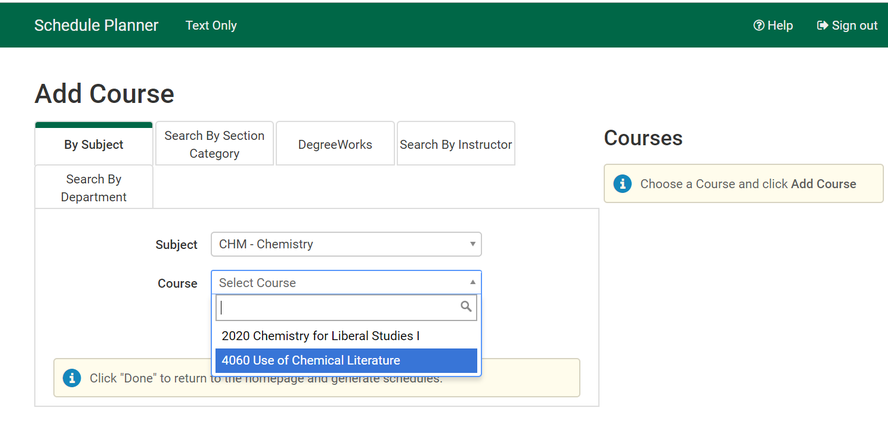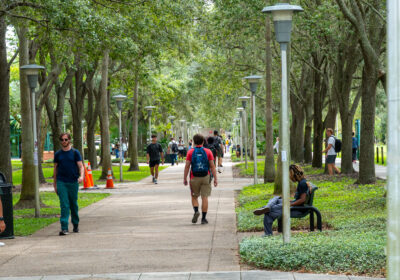OPINION: Schedule Planner should be brought back to streamline registration process

The Office of the Registrar released a universitywide email to USF students Feb. 2 that included the tentative summer schedule. The email announced that the Schedule Planner would no longer be available for class and schedule selection for future terms.
Even though the decision was already made, the Schedule Planner should be brought back until it can be replaced with a better alternative.
The administration made the decision when it was time to renew the contract for the Schedule Planner and students expressed their dissatisfaction when using the service, according to Vice President for Student Success Paul Dosal.
“We surveyed students and found that the majority of students found the Schedule Planner only ‘somewhat helpful’ or ‘not at all helpful,’” Dosal said in an interview with The Oracle.
Based on this feedback and the “high cost” of the service, which consists of an annual fee of over $80,000, according to University Registrar Catherine Mund, the administration felt it was the correct decision to get rid of the Schedule Planner.
Considering this decision was taken after surveying students, it may seem like a correct one. However, with the current system, the scheduling and registration process has become more tiresome than before.
After the removal of the Schedule Planner, students can no longer generate hypothetical schedules. This means students have to either enroll in the classes to see their week at a glance or use a paper and pencil to visualize their class schedule.
In addition, rather than having a seamless system capable of narrowing down and categorizing classes, students now have to go through the tedious process of scrolling through course catalogs.
Another problem not addressed by the current OASIS system is the process of transferring each course code into the system for registration. Rather than having the list of Course Reference Number (CRN) codes ready and able to be sent to the registration page from the Schedule Planner, students now have to write down each of their CRN codes and manually input classes into the system.
Students also didn’t know the change was happening prior to the Feb. 2 announcement, after the service had already been removed. The administration not only used the survey as the only reason to not renew but also avoided sending a warning to students before removing the service.
The sudden removal of the Schedule Planner follows a pattern of poor communication between USF administration and its students, faculty and the Tampa Bay community over the past few months.
USF administration decided Oct. 15 to begin the process of dissolving the undergraduate programs in the College of Education (COE) to help with cutting 8.5% of the university’s budget due to COVID-19-related setbacks. However, the decision was announced without prior warning or valid explanation to those in the USF community.
The decision was revised Nov. 10 to maintain selective undergraduate programs at the COE after backlash continued for months from the USF and Tampa community. The reaction was not only a result of the decision being unpopular but also because USF administration did not clearly warn the community prior to taking the decision.
During a USF Board of Trustees meeting in November, Trustee Byron Shinn expressed his frustration with the lack of communication between the administration and the trustees regarding the cuts, according to an Oracle article.
Several of the trustees said they had heard the news from outside sources and felt that such information should’ve been communicated to them before the decision was made.
Almost three months later, USF has continued to announce changes impacting students without considering long-term impacts these changes may have.
The decision not to renew the Schedule Planner leaves students without an adequate alternative to the services lost and doesn’t ease the hassle of course registration.
It may be that the survey proved students found the Schedule Planner only somewhat helpful or not helpful at all, but removing it and replacing it with OASIS and a separate page for the course catalogs isn’t what the students surveyed likely had in mind.
If students indeed found it unhelpful, then the logical route should have been to replace it with a better system. Mund said the administration hopes to implement upgrades for the OASIS Self-Service system around the beginning of 2022, but those upgrades were not specified.
To solve the current dilemma of registering for classes, USF administration should temporarily renew Schedule Planner until an efficient alternative is found. Mund said the contract could’ve been renewed for one extra year which would have led to the possible implementation of a new service next year. Instead, the administration chose to remove the service without a better alternative present.
USF administration also needs to focus on improving how it communicates to students, faculty and the community, especially during this period when USF is cutting back on services to save money.
If the Schedule Planner is not brought back, USF administration needs to provide a specific timeline to ensure that an alternative is provided soon and students aren’t left to deal with a confusing system when summer semester registration rolls around.








